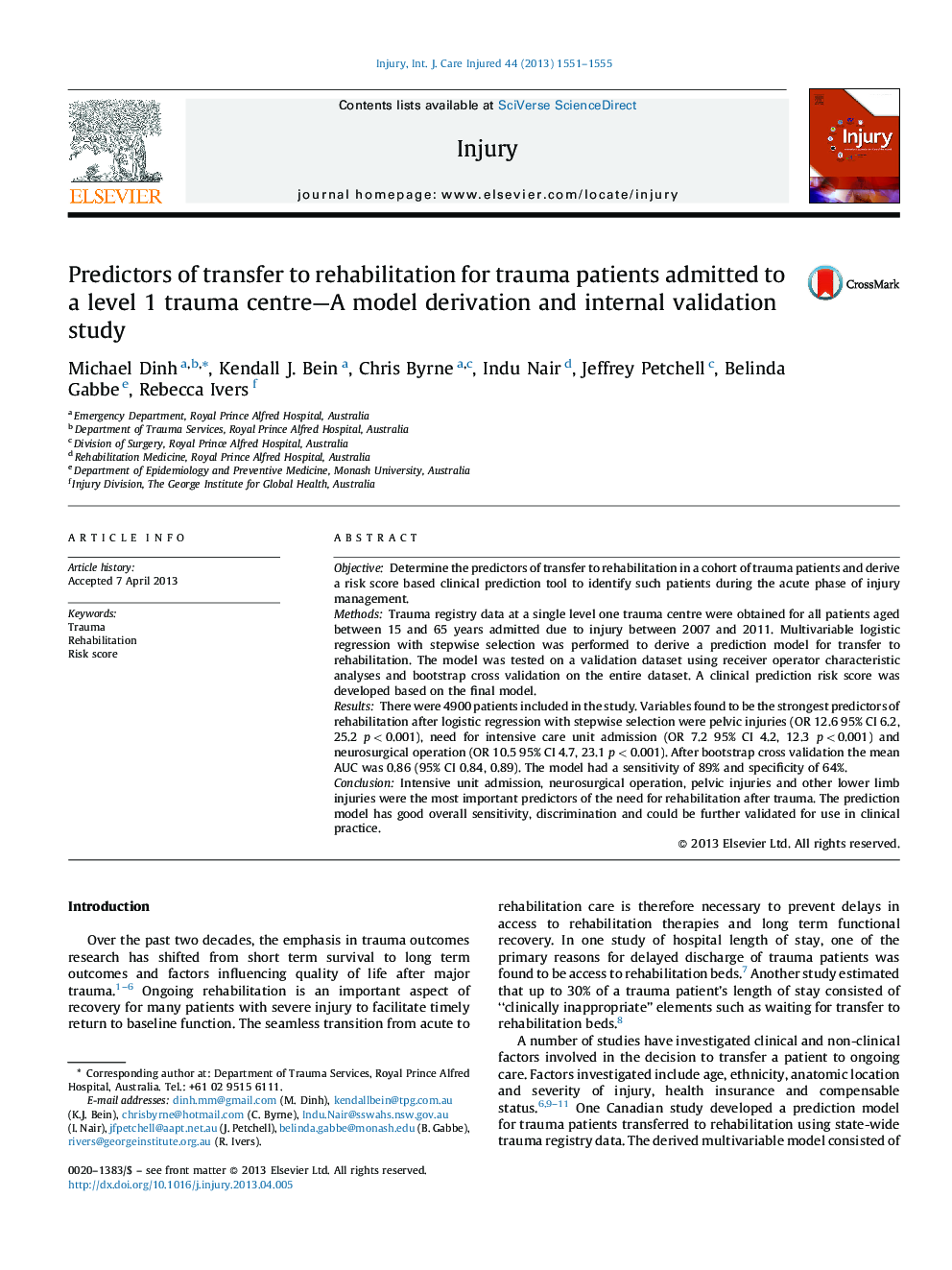| Article ID | Journal | Published Year | Pages | File Type |
|---|---|---|---|---|
| 6083996 | Injury | 2013 | 5 Pages |
ObjectiveDetermine the predictors of transfer to rehabilitation in a cohort of trauma patients and derive a risk score based clinical prediction tool to identify such patients during the acute phase of injury management.MethodsTrauma registry data at a single level one trauma centre were obtained for all patients aged between 15 and 65 years admitted due to injury between 2007 and 2011. Multivariable logistic regression with stepwise selection was performed to derive a prediction model for transfer to rehabilitation. The model was tested on a validation dataset using receiver operator characteristic analyses and bootstrap cross validation on the entire dataset. A clinical prediction risk score was developed based on the final model.ResultsThere were 4900 patients included in the study. Variables found to be the strongest predictors of rehabilitation after logistic regression with stepwise selection were pelvic injuries (OR 12.6 95% CI 6.2, 25.2 p < 0.001), need for intensive care unit admission (OR 7.2 95% CI 4.2, 12.3 p < 0.001) and neurosurgical operation (OR 10.5 95% CI 4.7, 23.1 p < 0.001). After bootstrap cross validation the mean AUC was 0.86 (95% CI 0.84, 0.89). The model had a sensitivity of 89% and specificity of 64%.ConclusionIntensive unit admission, neurosurgical operation, pelvic injuries and other lower limb injuries were the most important predictors of the need for rehabilitation after trauma. The prediction model has good overall sensitivity, discrimination and could be further validated for use in clinical practice.
